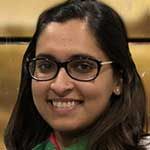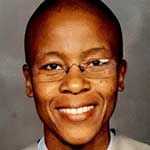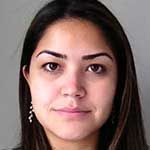COVID-19 has taken center stage worldwide. No matter where you practice or what type of patients you treat, the pandemic has changed the way you live now.
But how ophthalmologists have coped and what challenges they faced has differed by individual and by location. That’s why this year, the YO Info International Edition asked our international colleagues how COVID-19 has affected our profession and the health care systems in their home countries.
See a slide show on the effects of COVID-19 in South Africa and India.
We wanted to know what’s happening with vaccination programs, how they’ve coped with burnout and stress, what specific conditions and complications have surfaced since the pandemic began and what advice they would give themselves and others across the world.
India
 Aditi Mehta, MBBS
Aditi Mehta, MBBS
Fellow, Oculoplastics
Sri Sankaradeva Nethralaya
Guwahati
India, a developing country with the world’s second largest population and a fractured healthcare system, entered the pandemic on its back feet. The sudden announcement of a nationwide 21-day lockdown beginning March 25, 2020 put a pause on everyone’s life. Overnight, all elective outpatient departments (OPDs) were shut down, and, in turn, all elective surgeries were deferred. The focus shifted to emergency healthcare and designating COVID-19 wards and blocks equipped with intensive care.
Most ophthalmologists working in multispecialty institutes as well as government hospitals became engaged in dealing with emergent and urgent cases as well as telemedicine services. These larger institutes quickly mobilized the workforce, and we residents received rotation postings in the ophthalmology ER, telemedicine OPDs and COVID-19 critical care wards, all supported by anesthesia, pulmonology and critical care residents and their teams. The telemedicine OPDs really served as a boon for not only ensuring follow-up with patients, but also streamlining treatment while deferring physical visits until they were safe. Once we overcame the initial jolt, hospital and departmental protocols were established for streamlining all the tasks.
Didactic teaching restarted shortly thereafter via online classes, and we all adapted to the echoes of Zoom webinars and internet connection lags. Bedside and clinic teaching was affected though, as was our surgical training due to the suspension of all elective surgeries. But we returned to the wet labs to teach the junior residents and hone our skills.
Although we have no exact data and underreporting is common, I can easily say that this pandemic not only cost the country a huge number of lives, but also stretched and nearly drained all of our available health and paramedical resources. The government was ready to help, but the nature of the illness was such that the guidelines had to be updated very frequently.
I also undertook a professional move in one of the ebbing phases of the pandemic in January 2021 and moved across the country for an ophthalmic plastic surgery fellowship in the relatively inaccessible, but well-equipped city of Guwahati, the gateway of northeast India.
At the time of my move, one big difference I noted was the stringency of the local government for testing travelers, patients and healthcare workers. The situation seemed slightly under control for a couple of months, but as soon as cases started rising, the local government reimposed strict lockdowns.
Now, more than 18 months after the first case in India, I can say that we have somehow managed to cope with the challenges. We have lost, but we have learned, and we are continuing to strengthen our healthcare system. Problems are the reason solutions exist. Teamwork and timely policy making are required to tackle this situation. Though we have been far from perfect, we have stood by each other as a community, as a healthcare system and as a nation. This spirit will lift us through in the coming days of the new mutations and next waves.
Vaccination Programs
The Ministry of Home and Family Welfare is in charge of the nationalized vaccination program for COVID-19. Following the first task force for vaccine development in April 2020, the program commenced in January 2021 with the vaccination of all health care workers. It was then expanded in time to include frontline workers and eventually all citizens over the age of 18.
By the end of August 2021, 588 million doses had been administered. Available approved vaccines include AstraZeneca, the locally developed Covaxin and ZyCoV-D, Sputnik V, Moderna and Johnson & Johnson. In addition, India had begun a humanitarian initiative known as “Vaccine Maitri” to leverage the country’s pharmaceutical industry to export Indian-manufactured vaccines to other countries. Though initially successful for South Asian and African countries, it has been temporarily suspended until certain domestic requirements are fulfilled.
The vaccination program remains efficient, and efforts are in place to streamline it, avoid wasted resources and provide a digital proof of vaccination immediately after administration. This has all been made possible due to the comprehensive development of not only the healthcare sector, but also the infrastructure, manufacturing and telecommunications sectors as well as the indigenous “Aarogya Setu” contract tracing and self-assessment app.
Burnout and Stress
Although social interaction was disrupted by COVID-19, our mental well-being suffered in the isolation, the challenging working hours, the quarantines and the morbidity around us.
Stress-busters like eating a meal together or watching a movie in the cinema became impossible. For those living away from families and working in the hospital, the travel restrictions seemed endless. For those staying with families, going home was risky — what if we bring the virus home?
India does not have a good track record for the protection of doctors. Especially in the remote areas where facilities are limited, patients may come in at very critical stages, and unfavorable outcomes have at times resulted in mob violence. Although these incidents have unfortunately happened across the country, a majority of the healthcare workers have been supported by the society at large and regarded as saviors. We, in turn, have left no stone unturned to save the patients under our care, to beat the COVID-19 out of them and to win this war. Each life saved has boosted our morale.
Colleagues have become friends, and in my work circle, friends have become partners, with a few “restrictions-in-place weddings” whenever the wave has ebbed. I’ve been lucky to attend three such weddings virtually. I state this in order to emphasize that the jolt of the pandemic and its social implications made everyone realize what matters to them the most. For a daily wager or a freelancer, getting food on the table became a priority. For a workaholic, staying at home made them appreciate the value of family. For the epidemiologist, contact tracing and isolation became the target. For an intensive care specialist, saving one more life from COVID-19 was the ultimate win. The spirits have been tired at times but never have we lost the zeal to continue serving our patients to the best of our abilities.
Eye Complications and the Pandemic
Rhino-orbital mucormycosis — also known as black fungus — has been the epidemic within the pandemic in India, sweeping across the country during the second wave. The role of steroids, contaminated oxygen supplies and disease-related hyperglycemia have been widely speculated as causative factors. The need of the hour is now to tackle the fungal infection head on, establish a diagnostic algorithm and revisit the management options, with a special focus on a multidisciplinary team approach and the psychological challenges of the mutilating exenteration surgery.
The tertiary care hospital where I was working in 2020 was overburdened by this disease, and ophthalmologists played a critical role in early diagnosis of orbital apex involvement, decision making for eye-sparing surgery and carrying out debridement alongside ENT and neurosurgery colleagues. Radiologists worked overtime and so did the microbiologists and endocrinologists, and whenever the anesthetists declared the patient unfit for surgery, the ophthalmologists stepped in with intralesional amphotericin injections.
When the mucor wave was at its peak in 2021, my new location in northeast India witnessed only a handful of cases. Healthier lifestyles, less prevalence of uncontrolled diabetes and overall stricter regulation for COVID-19 spread may be attributable, but I’m glad this fungus did not follow me across the country.
Australia
 Zoe Gao, MBBS (Hon), FRANZCO, BMedsc, MPhil (Ophth)
Zoe Gao, MBBS (Hon), FRANZCO, BMedsc, MPhil (Ophth)
Deputy Chair, Younger Fellows Advisory Group - Royal Australian and New Zealand College of Ophthalmologists
Comprehensive ophthalmologist
Precision Eye Clinic
Sandy Bay, Tasmania
Thankfully, Australia and New Zealand have experienced relatively low numbers of COVID-19 cases, and both nations’ approaches have been to keep our borders tight, lock down when cases occur and eliminate viral spread. This has allowed for periods of zero cases in many areas and therefore relatively normal working life. Unfortunately, this is proving to be a lot more difficult with the Delta variant.
When lockdowns did happen though, elective surgery was canceled and ophthalmology training was even suspended at one stage due to the lack of surgical time. Examinations have also been delayed and moved to online formats. Just like other ophthalmologists around the world, we have had to try our best to manage patients with telehealth and manage the need for PPE given the close proximity of our patients. Teaching and conferences have largely shifted to virtual formats, which has improved accessibility. So far, we have been very lucky and not reached maximum ICU capacity with COVID-19 cases or had ophthalmologists deployed to the frontline.
Vaccination Program
The vaccination program has faced some hiccups. There has unfortunately been a level of vaccine hesitancy, which was likely compounded by the rare incidence of thrombosis with thrombocytopenia syndrome (TTS) that accompanied the AstraZeneca vaccine. This is still the recommended vaccine choice for all people 60 years and over in Australia; however, the Moderna vaccine has now been approved by the Therapeutic Goods Administration (TGA), so this, in addition to the Pfizer vaccine, will hopefully encourage many 12- to 59-year-olds to be vaccinated as soon as possible.
Implementation has occurred in stages, but each state/territory has had regional variances and the rollout has not always been smooth, with supply issues and discrepancies between federal and state levels as well as public health–run clinics versus primary care physicians. Currently we have only fully vaccinated 34% of the population age 16 years and over.
Burnout and Stress
The Royal Australian and New Zealand College of Ophthalmologists (RANZCO) established a Health and Wellbeing Working Group that provides resources and a monthly newsletter with strategies to try and manage stress and avoid burnout. But it’s definitely been a challenge even despite our relatively low COVID-19 case numbers. After the initial lockdown ended, there was a large backlog of patients to manage. Almost everyone has experienced holidays being cancelled due to travel restrictions, and many of us have had to manage homeschooling, partners working from home and lockdown alongside social isolation. This has resulted in locally focused travel and holidays though, which has been positive for supporting local businesses. The relative lack of face-to-face conferences has also been difficult, but ophthalmology is a relatively small community, and so I do think that we have supported each other well throughout this pandemic.
Post-COVID
Personally, I don't feel that there will be a post-COVID era where we return to what we knew as “normal.” I’m hopeful that with high vaccination levels — and in particular once we have the safety data to ensure children are also covered — we can have some relief from COVID fatigue. I’ve been incredibly lucky living in Tasmania, Australia, where I've been significantly sheltered from the pandemic, but I’m hopeful that I will be able to take my children overseas and travel in the future. I really look forward to when families can be reunited.
Jordan
 Mais AlKilany, MD
Mais AlKilany, MD
Academy Leadership Development Program XXIII, Class of 2022
Co-founder, Young Ophthalmologists of Jordan (YOJO)
Amman
In Jordan, the first response to COVID-19 was complete lockdown. All hospitals and clinics were shut down in anticipation of the surge in COVID patients. Unfortunately, at first, this caused chaos. Ophthalmic care and procedures were considered elective ones, and neither healthcare providers nor patients had access to hospitals, as all forms of transportation were banned. We also had a strict stay-at-home policy that lasted for over a month. This of course took a toll on patient care. We’ve lost a lot of follow-ups, which has ultimately set us back in the chain of care.
Vaccination Program
Jordan started the national vaccination program for COVID in January 2020 with priority to senior citizens and healthcare professionals. Since then, we’ve come a long way, with better supply and more vaccination centers all over the kingdom. Yet so many people were skeptical, and the numbers of people applying for the vaccine were low. As a result, the government had to implement more strict regulations that would push people to get the vaccine before going back to work and going about their normal activities. For example, if the public wants to attend large gatherings or wants to go to the movies, vaccination is required.
Burnout and Stress
The stress of dealing with COVID came hand in hand with dealing with the unknown. Being in lockdown, a lot of people learned how to cook. After countless loaves of banana bread, I learned to paint — painting takes your mind off the chaos and transpires that chaos into order on canvas. Many of my colleagues also took the time to be with family or finish their reading lists. Ultimately, we found solace in others as we’re all going thorough one collective experience.
Post-COVID Advice
Be proactive. If opportunities don’t present themselves, create ones. Take your time. Be patient and tread gently with yourself and people around you. We are all caught up in this rat race, and COVID made us realize that our lives can be put on hold in a split second. So creating a rich, introspective connection with oneself and investing in your mental stability are just as important, if not more so, than your plans and charts.
South Africa
 Nonhlanhla Majola, MBChB, Dip Ophth, FC Ophth, MMed
Nonhlanhla Majola, MBChB, Dip Ophth, FC Ophth, MMed
Member, Executive Board, Ophthalmological Society of South Africa (OSSA)
Past Member, OSSA YO Committee
Director, Dr. Nonhlanhla Majola Inc.
Durban
The COVID-19 pandemic has undoubtedly been the most significant black swan event of our generation. It has devastated even the richest countries with the best health care systems in the world. As the worst-hit country on the African continent, South Africa has recorded 2.69 million cases and 79,584 COVID-19-related deaths since the first case was reported on March 5, 2020.
Our government’s response to the pandemic was relatively swift and decisive from the start. Hard lockdowns, widespread screening/testing and clear messages on preventative measures probably helped to prevent an even bigger disaster — as did a strict mask mandate.
The country’s contracted economy, high levels of unemployment and a health care system already on the brink of collapse were always going to worsen the overall impact of the pandemic. Severe staff shortages alongside a shortage of PPE as well as ventilators and therapeutics were all real problems with which we have had to contend. Rampant corruption and maladministration only served to make things worse. The brunt of the pressure was felt most by those within the public health system. To better manage the surges, most elective surgery and noncritical healthcare services were halted, allowing us to redirect available resources to the front line when necessary.
Over and above the preventative measures that needed to be taken, many ophthalmologists have had to adjust and streamline appointments and workflow systems to avoid congestion at busy clinics. Screening of patients, including preoperative and hospital pre-admission COVID testing, has become the norm. We have seen patient numbers at our clinics wax and wane with each adjustment of the lockdown regulations.
But things are beginning to stabilize, and we’re adjusting to the new way of life. Private practices that were financially hard hit are clawing their way back to life. Because of lessons learned from previous peaks, we are able to handle each subsequent wave better than the last. The emergence of new variants, however, will continue to keep us on high alert.
Ultimately, this pandemic has affected everyone, both on a personal and financial level, with loss of income and/or loved ones, patients and colleagues. Our frontline workers are experiencing severe burnout and the rest of us can only try to brace ourselves for a different future than we ever imagined.
Vaccination Program
Our vaccination program got off to a slow and rocky start in February 2021, with health care workers taking first priority. The early phase of the program was marred by vaccine shortages — an issue that most developing countries have experienced. For the most part, we’ve since overcome these challenges but our struggles remain. By opening up the vaccination rollout to all adults above the age of 18 as well as producing vaccines locally, we thought we would be closer to our target of vaccinating enough people to reach herd immunity by the end of 2021. This will not happen. With only 7.9 percent of the population fully vaccinated, we are nowhere near the 70 percent requirements for herd immunity.
Vaccination resistance, fueled by misinformation and superstitions, is now the enemy. Some of the anti-vaccination sentiments are deeply rooted in strong traditional and religious beliefs. Health department officials and traditional and religious leaders are not doing enough to dispel the negative rhetoric. I’ve therefore taken it upon myself to educate and encourage each and every one of my patients who is eligible to go and get vaccinated. I believe that if more of us did this, ophthalmologists could make a bigger difference.
Burnout and Stress
All of my colleagues have found unique ways to keep their heads above water and stave off stress and burnout. Personally, this pandemic compelled me to become introspective and recalibrate my priorities and values. In the midst of the chaos, fear and uncertainty, I decided to use the time to become closer to my family and myself. This gave me a greater appreciation for the people around me and urged me to prioritize my mental health and well-being. As a result, I now dedicate more time to my family and to doing the things that I love, like meditation, exercise, gardening and taking long walks on the beach with my dog. This helps me maintain my sanity and keeps me invigorated. I hope to continue this, even beyond the pandemic.
Post-COVID Reflections
What I’ve missed the most during this challenging time are the face-to-face academic and professional meetings. Virtual events are great, but there is only so much you can achieve on a remote platform. I miss the opportunity to travel, the physical interaction with colleagues and the teaching and knowledge transfer. I especially miss the surgical skills transfer. We’ve all been robbed of this aspect of our professional development. I look forward most to a time when we can have this again.
Brazil
 Heloisa Nascimento, MD
Heloisa Nascimento, MD
Universidade Federal de São Paulo Barueri
Barueri, São Paulo
Brazil is a very large country with wide variations. In the south of Brazil, São Paulo, ophthalmic procedures decreased by 80% in 2020. Especially for me, a uveitis specialist, I had many patients who had recurring conditions, and some of them required surgeries. Also, many patients decided to stop immunosuppressive therapy because they were afraid that contracting COVID would be worse.
Our group has studied many COVID-19 cases. When we had a decrease in ophthalmic consultations, we decided to study COVID findings in the eye. We were the first to report retinal findings in May 2020, and up to today, we have seven published articles demonstrating vascular abnormalities in the retina as well as the presence of viral particles in deceased COVID patients.
Burnout and Stress
It was a stressful year for our group because we examined many COVID patients and visited many wards and intensive care facilities as well as many morgues. Many of us, including me, had COVID. And due to the high amount of pressure, many of us had episodes of high stress and burnout, which we all managed with physical exercise and therapy. Particularly for me, it was very hard to combine all of my professional work along with online classes for my children. One of my boys is learning to read and write, and it was very difficult for me to maintain an ophthalmic practice while staying with my kids and taking care of the home.
Post-COVID Advice
It has indeed been a difficult time, but it’s also been an opportunity for all of us to evaluate what really matters, reshape our values and become better human beings. I will never be the same. My advice: Empathy remains one of our most important medical skills.
COVID-19 Around the World